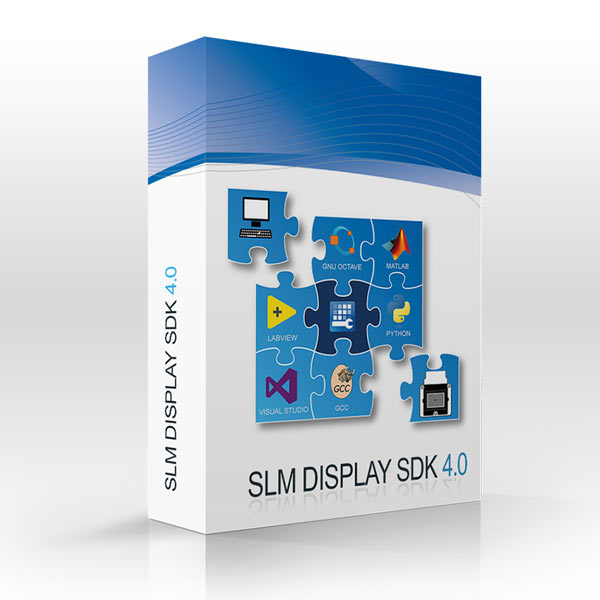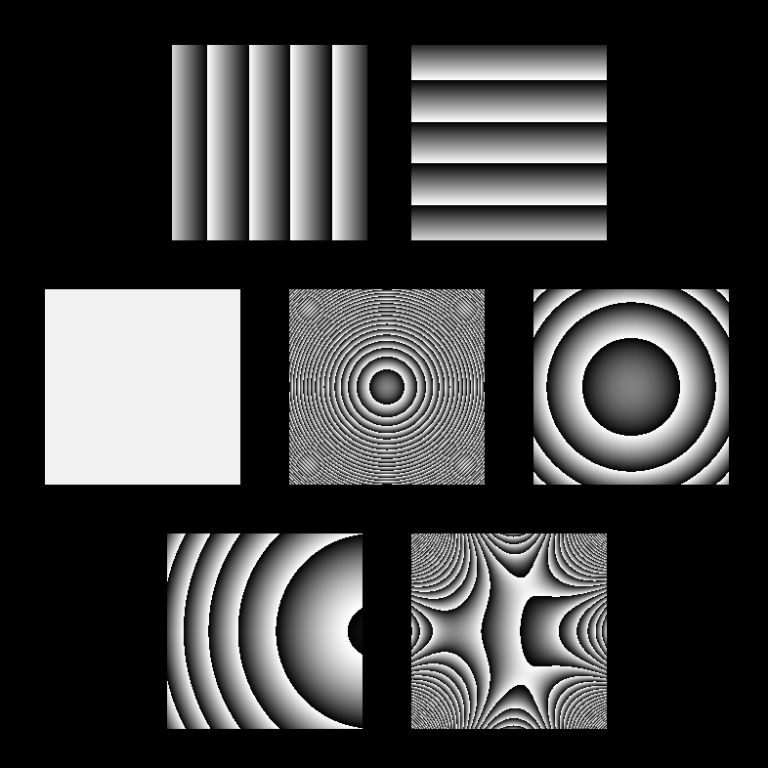全站搜索
Search the entire website
Search the entire website

The HOLOEYE SLM Display Software Development Kit (SDK) is an interface to show images and phase arrays directly on the SLM within many programming languages. It also supports data manipulation functions like phase overlay calculated from Zernike coefficients, optical beam manipulations, and data transformations.
The SDK enables the use of multiple SLM devices connected to the same computer within the same application independently. It is also possible to tile the SLM display area to use multiple functions independently on a single SLM display device or use multiple SLM devices merged within an NVIDIA Mosaic setup to allow perfect hardware synchronization.
To use the SDK you need to have one of the following supported development environments installed:
The current SDK version is available for Microsoft Windows 10 and above (Windows 64 bit versions). The SDK supports all current HOLOEYE Spatial Light Modulators with resolutions up to 4160 x 2464 pixel.
The initialization of the SLM or multiple SLMs [within the target platform] is reduced to the minimum required amount of code. It is possible to use multiple SLM devices or split one SLM display into multiple SLM canvas.
Data can be transferred to the SLM from floating point or integer phase or image data arrays. The SLM Display SDK supports upload and display of data stored in all common image file formats.
The loaded data can be addressed including beam manipulation overlay functions like blazed gratings (beam steering or reposition of the projected hologram), lens functions (focus adjustment), Zernike functions or Wavefront compensation data (which typically is delivered with the SLM).
The SDK also includes built-in speed-optimized commands for the display of essential functions (e.g. lenses, gratings) on the SLM.
The SDK permits sophisticated management of data uploaded to the graphics adapter’s memory (VRAM) and provides detailed information about the timing when the data is actually displayed on the SLM at high frame rates.

We provide a set of code examples which demonstrate the features of the SLM Display SDK.
The examples demonstrate the basic functions and highlights the values which can be adjusted.
We recommend using the examples to start working with the SDK. Even if you have limited experience in programming within one of the supported environments, the examples offer a straightforward starting point as you get immediate feedback on how it works and how changes of parameters affect the result.

To get access to the SLM Display SDK, please register at our download website.
(LC 2012, PLUTO, PLUTO-2 & 2.1, LETO-3, ERIS):
Minimum Requirements:
Processor: Dual core CPU with 2 GHz (e. g. Intel Core 2 Duo E6320)
Memory: 2 GB
Graphics Card: DirectX 11 capable GPU with minimum 256 MB Video RAM (e.g. Nvidia Geforce 7800 GT or built-in Intel GPU or equivalent)
Recommended Requirements:
Processor: Quad core CPU with 3 GHz (e.g. Intel Core i5-2500)
Memory: 8 GB
Graphics Card: Nvidia or DirectX 11 capable GPU with 2 GB Video RAM (e.g. Nvidia GTX750)
(GAEA-2):
Minimum Requirements:
Processor: Quad core CPU with 3 GHz (e. g. Intel Core i5-4690)
Memory: 8 GB
Graphics Card: DirectX 11 capable GPU with minimum 2 GB Video RAM and HDMI 2.0 output (e.g. Nvidia GTX950 or similar)
Recommended Requirements:
Processor: Quad core CPU with 4 GHz (e.g. Intel Core i7-7700k)
Memory: 16 GB or more
Graphics Card: Nvidia or DirectX 11 capable GPU with 8 GB Video RAM and HDMI 2.0 output (e.g. Nvidia GTX1070)
OVERVIEW SCREENSHOTS SPECIFICATION SCREENSHOTS MeSI™ v3.71 software screenshots. The software is available for Windows 64 bit and supports 4K resolution. 1. DUT spectrum – Wavelength Spectrometry 2. Measurement analysis (Load...
查看全文空间光调制器,作为数字光学技术的核心组件,能够对光波的空间分布进行灵活调制。它能够将在光学数据场上的信息,无论是一维还是二维,都方便地编码到光波中,实现光波的调制目的。通过电驱动信号和其他信号的控制,空间光调制器能够实时动态地改变光分布的振幅、偏...
查看全文此前,青亭网曾报道过NVIDIA、三星、剑桥大学等对空间光调制器(SLM)全息方案的探索。空间光调制器可调节光波的空间分布,在电驱动信号控制下,可改变光在空间中传播的振幅、强度、相位、偏振态等特性,从而形成全息影像。自动驾驶汽车的LiDAR传感器也使用了空间光...
查看全文什么是空间光调制器?简单来说,空间光调制器是一种能够对光波的“形状”进行动态调整的装置。如果将光比作水流,传统的光学元件(如透镜或棱镜)类似于固定形状的管道,只能让光按预设路径传播;而SLM则更像一个智能阀门系统,可以实时改变“水流”的方向、强度甚至形...
查看全文